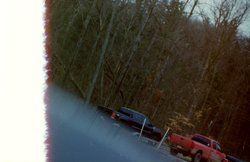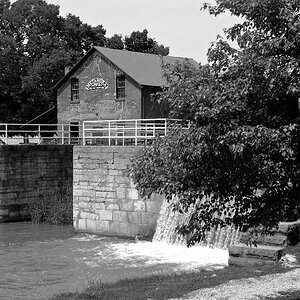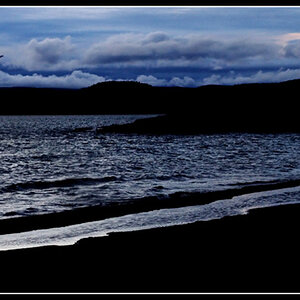beddingfield
TPF Noob!
- Joined
- Jan 11, 2020
- Messages
- 51
- Reaction score
- 2
- Can others edit my Photos
- Photos NOT OK to edit
I had the luck of winning a box of cameras on ebay last year. Had them cleaned and serviced, canon ftbs. shutters retimed and everything checked as good.
Have been using Pro Photo as it IS the cheapest place to get color film and even black and white film processed.
I have been having odd issues with the developed film I get back from them. Ill have sections of film that are perfectly developed, and then sections that are clear and have tiny streaks of image in them.
I have thought it might be the light meter causing me to do the shutter speed wrong, so I went to using sunny 16 and using the film speed as shutter speed. Received 14 rolls back in the mail, some shot with sunny 16 rules and some shot using the cameras light meter. Still have the same issues with the film but when I looked at the film by processing number I noticed that
when the same type of film, say GC 200 was used for roll #1 and 2, they only have 1 or 2 frames that are "dead". But when roll # 3 is Pro Image 100, roll #3 will have 30-40% of frames have no image in them.
And I think they have a chemistry issue because one roll ive scanned so far was shot after a foot of snow fell, and I took a series of photos of a piliated wood pecker on a stump. The pilliated wood pecker has RED on its head. In the developed film the red was a strange ORANGE color.
Is there any home developer who uses genuine KODAK chemicals, who would let me send a few carefully taken test rolls?
Have been using Pro Photo as it IS the cheapest place to get color film and even black and white film processed.
I have been having odd issues with the developed film I get back from them. Ill have sections of film that are perfectly developed, and then sections that are clear and have tiny streaks of image in them.
I have thought it might be the light meter causing me to do the shutter speed wrong, so I went to using sunny 16 and using the film speed as shutter speed. Received 14 rolls back in the mail, some shot with sunny 16 rules and some shot using the cameras light meter. Still have the same issues with the film but when I looked at the film by processing number I noticed that
when the same type of film, say GC 200 was used for roll #1 and 2, they only have 1 or 2 frames that are "dead". But when roll # 3 is Pro Image 100, roll #3 will have 30-40% of frames have no image in them.
And I think they have a chemistry issue because one roll ive scanned so far was shot after a foot of snow fell, and I took a series of photos of a piliated wood pecker on a stump. The pilliated wood pecker has RED on its head. In the developed film the red was a strange ORANGE color.
Is there any home developer who uses genuine KODAK chemicals, who would let me send a few carefully taken test rolls?



![[No title]](/data/xfmg/thumbnail/39/39476-6e232ea205145ad1a1da0690d7617642.jpg?1619739045)
![[No title]](/data/xfmg/thumbnail/33/33360-ff0b69685c94740bde3f53b6d7aa9af1.jpg?1619735924)


![[No title]](/data/xfmg/thumbnail/31/31748-63241c520f250328a5ec32959b8f53d0.jpg?1619734989)





![[No title]](/data/xfmg/thumbnail/39/39480-e4e26ffe5c6148262ac81eff975a5c0e.jpg?1619739047)
![[No title]](/data/xfmg/thumbnail/31/31747-2e2e2bda16938a6a1d5fd6120c558293.jpg?1619734987)